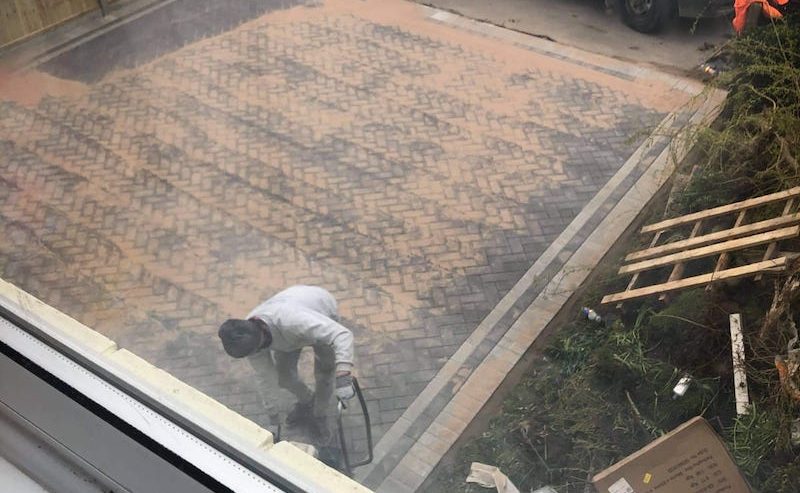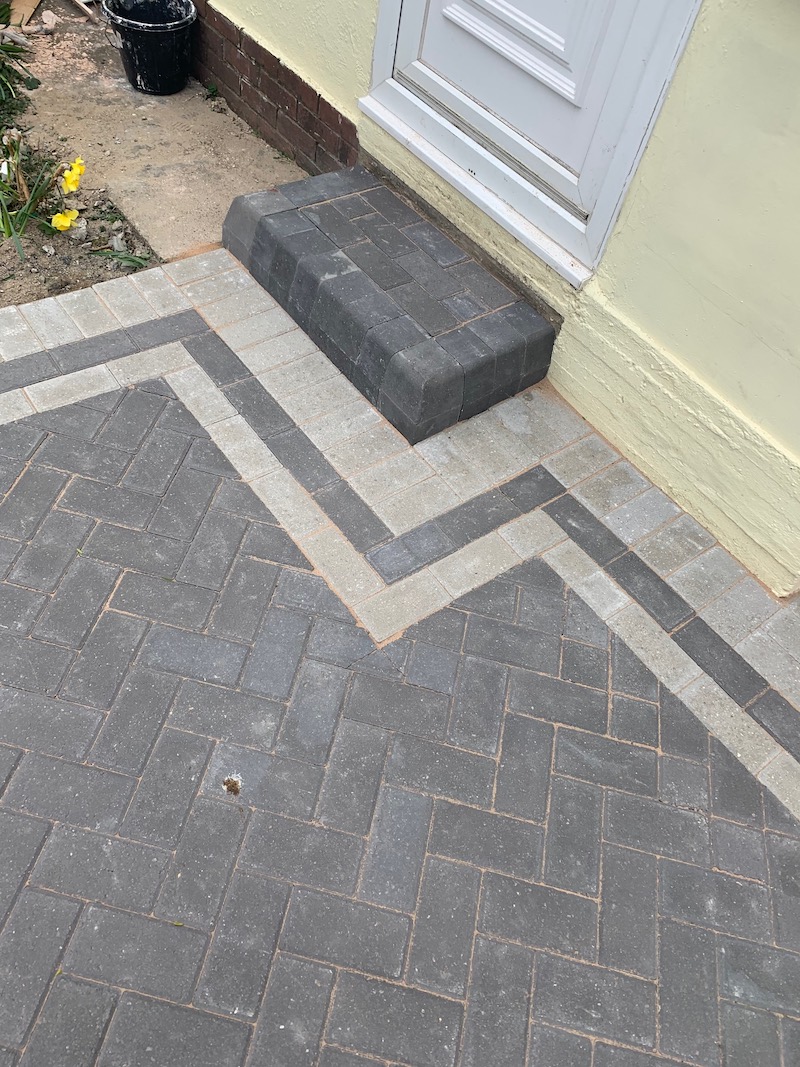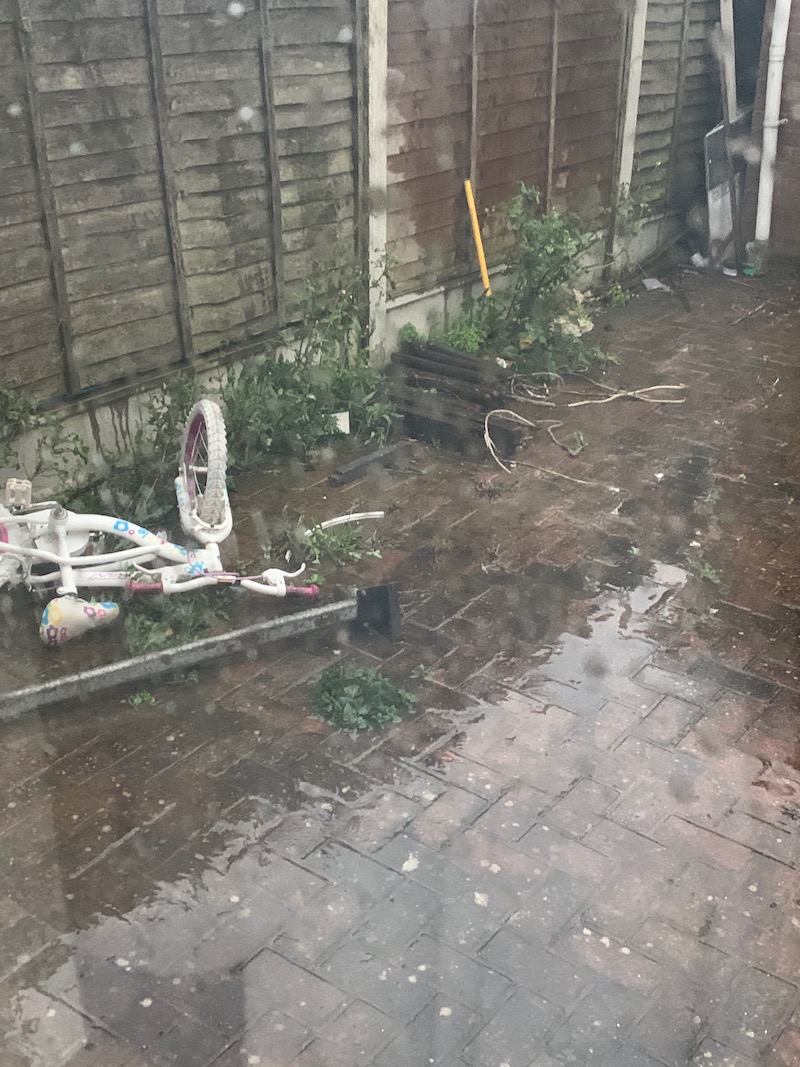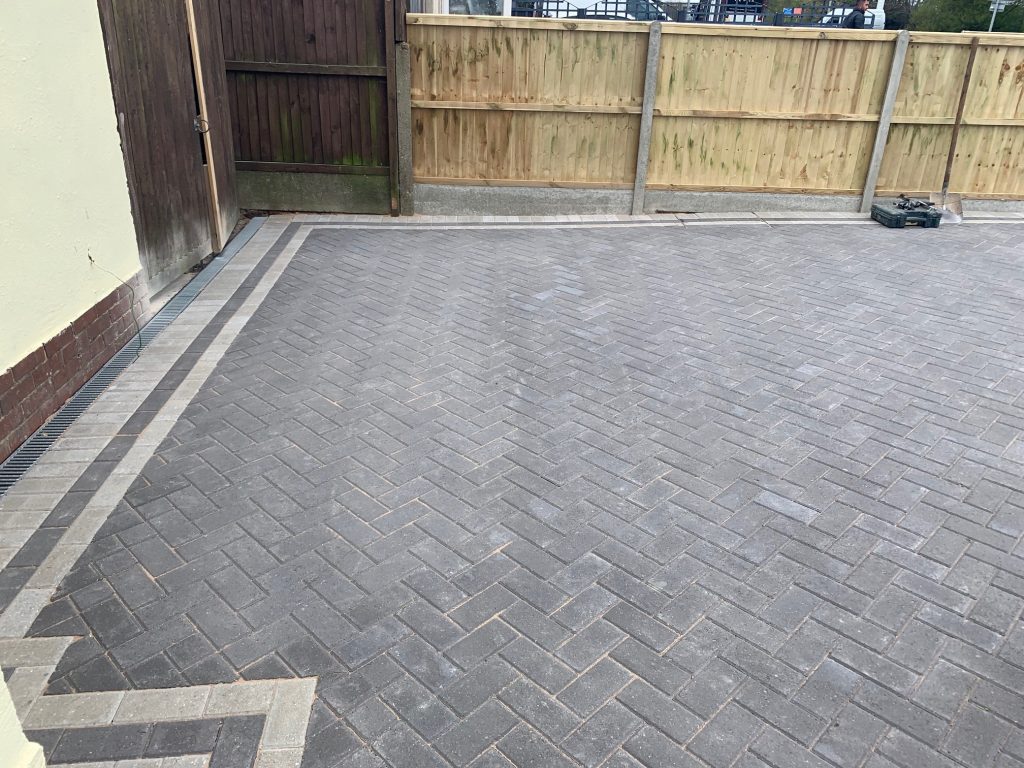One of the biggest problems you face with a lovely looking block paving area is the eventual return of weeds. It doesn’t matter than membrane was fitted, the weeds aren’t coming up from 250mm deep! These weeds are from birds doing a number 2 and depositing seeds in the joints of your block paving. The other reason is the lighter seeds also get carried into this gaps by the wind. For whatever reason you’ve got weeds coming through these gaps you need to seal the black paving!
Table of Contents
Last year I covered how to weed block paving. So if you’re block paving is looking nasty then I think you might want to re-visit that post first. Essentially you’ll need to get the best weed killer you can find for block paving and then follow that article first. It’s important that you are right back to a clean patio with the joints neatly filled with sand first so that a block paving sealer can do its magic! A good quality patio cleaner and petrol pressure washer will help massively here.
If you have a large number of weeds then definitely go with the top pick on the best weed killer page. That Gallup is really nasty stuff and absorbs into the leaves and goes right down into the root tip. So don’t bother weeding to you’ll actually reduce how effective it is! If you’re not really into chemicals then there’s some organic weed killer options.
Give it a few weeks and the magic happens. That means really, being the start of April, you need to be doing this part of the gig right now…in time for the better weather where we can seal this block paving and should get a good 5-7 years out of it if we get it right.
Seal block paving joints to stop weeds
Before you go about laying block paving sealer everywhere, make sure that you have filled all the paving joints right back up with sand and really press dit in as best you can after the clean up. If it’s a new patio then no problem because you laid sand all over then smashed it in the gaps with a wacker plate.

This stage is imperative. While the sealers work well, they are not gap fillers. You’ll have a little tolerance but filling up cracks with sealant just doesn’t work how we would like it to. That’s job of the sand, and then the paving sealer will bond that all together. Here’s a look at the sand being pressed into the gaps on a block paving:

How to stop weeds coming through your block paving driveway?
Overtime the paving sealer will break down, and seeds will get into the sand. This is a natural process of fair wear and tare, certainly no fault of the sealer manufacturer. When this happens, seeds get into these crevices and the problems start. It’s our job to identify when this breakdown occurs. If we catch it and clean/reseal our patio or block paving early enough then this will never develop into full blown problem like you can see in this picture:

Once it gets this bad I’d actually rather lay block paving again that clean up in terms of using my time efficiently if it’s a tight deadline. Luckily most homeowners aren’t in a rush to move onto jobs so you can just hit that area with a super strong weed killer and then wait. But pulling those weeds up still alive is nothing short of a nightmare work wise.
Block paving sealer to stop weeds
My first choice every time is Everbuild path and patio sealer because its half the price of smart seal and really does a decent job but I would probably say SmartSeal block paving sealer has the edge on longevity and quality. There’s two ways to go about this and ones a roller but my preferred method I’ve been using recently is the squeegee. I only found this trick out a few months ago when I was watching some random FaceBook pop up for tarmac driveways. It got me thinking actually, that would be superb for block paving too. Sure enough, fast less material is water in the roller and of course, you don’t destroy a roller brush either.
Just pour it on, obviously starting at the highest point of your driveway and work your way back to the lowest point where the drainage is. Obviously, you want to be super careful to not let this end up in the drain tray. If you don’t trust yourself stop well short of this area and finish with a brush. You’ll instantly notice just how much thicker the coverage is with a squeegee, an absolute top tip.
Drying times will vary and certainly be right on the longer end of the scales provided by manufacturers as you will be getting a seriously thick coat on this way. I would leave it to dry overnight. I really doubt you’ll need more than one coat using this method but certainly a second coat will not hurt at all, if you’ve gone for a wet look then it’ll just give a shinier finish still

Good Morning Terry,
I’m on my own and have contacted a few companies to give me a quote for sealing my driveway and its out if my budget.
Someone recommended I buy a path sealer but I don’t know where to start. If I buy all the stuff, would a gardener do it for me and how much do you think it would cost them to do the job.
Thank you
Margaret Robinson
Hi Margaret,
Thanks for your question – I think anyone could manage the task. A gardener especially. Just get them to take a look at: https://www.gardentoolbox.co.uk/best-patio-sealer/#how-to-use-patio-sealer-properly and search some other resources if there’s nothing case specific in that guide. Feel free to send me over pictures and I’ll give you a case specific rundown of your project too.
Regards
Terry